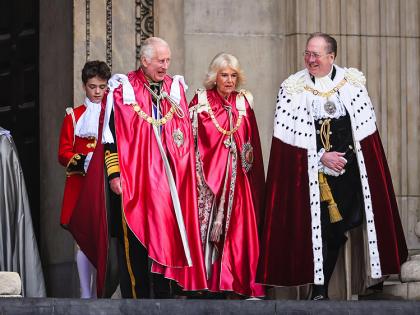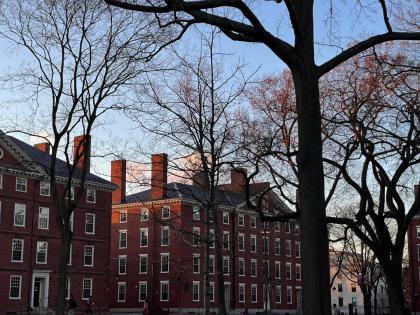Actor James Cagney had an extraordinary memory. Once, while getting into a car with his wife, he noticed a man he had not seen in decades across the street. “That’s Nathan Skidelsky,” Cagney told his wife. “I sat next to him in school.” Skeptical, his wife said, “Prove it. Go say hello.” Cagney crossed the street and introduced himself to the startled childhood chum, who indeed was Nathan Skidelsky. “The only problem,” Cagney’s wife later explained, “was that he didn’t remember who Jimmy Cagney was!”
Such experiences are common for “super-recognizers,” people with a remarkable memory for human faces, even for individuals with whom they’ve had merely chance encounters. Perhaps a waiter once served them a meal: five or 10 years later and 1,000 miles away, after the waiter has grown a beard, the super-recognizers see the man and remember him. They may remember extras who appeared on long-ago TV sitcoms, or actors whose only claim to fame is a 1982 commercial.
“Most of them not only recall the face, but remember the context in which they first saw the person”—though they aren’t necessarily good with names, and don’t have “photographic memories,” says Richard Russell, a postdoctoral fellow in psychology who has studied six super-recognizers. He and professor of psychology Ken Nakayama recently published their findings in Psychonomic Bulletin and Review. (This fall, Russell joins the faculty at Gettysburg College.)
The researchers were studying the polar opposites of James Cagney and his ilk: prosopagnosics, those with an impaired ability to recognize faces. Known as “face blindness,” prosopagnosia can, in extreme cases, extend to one’s nuclear family; prosopagnosic mothers sometimes pick up the wrong child from daycare. “It’s not an intellectual or social deficit,” Russell explains. “But it’s tricky to be in sales, for example, if you can’t recognize someone’s face.” Prosopagnosics can recognize people instantly in phone conversations; this isn’t a general memory problem, but a condition specific to faces. “We think there’s a dedicated memory system for facial recognition,” he says.
When the psychologists publicized their work, they heard from a few people who said, “I’m the opposite—I’m very good at recognizing faces.” The super-recognizers told of their ability to recognize people after they had aged, grown, shaved beards, or changed hairstyles. Typically, they discovered their talent gradually. One clue, Russell says, was that “they almost never had the experience of someone else recognizing them, but drawing a blank themselves”—Nathan Skidelsky’s problem—although the converse happened frequently.
Super-recognizers must alter their social behaviors to avoid upsetting others. At parties, for example, they may “play dumb” and allow themselves to be reintroduced to someone they recall from a casual encounter, but who clearly doesn’t know them from Adam. “Otherwise, it might look like you are stalking them, or paying them an inappropriate degree of attention,” Russell explains.
Facial-recognition ability seems to occur along a spectrum. The scientific community long viewed the capacity as either “normal” or “disordered”—a “pathological” model. And until recently, most of the prosopagnosics studied—perhaps 100 cases in the past century—had acquired the deficit, via brain trauma or a stroke, for example. But the Internet has uncovered many cases of face blindness: “It has become clear that there are a lot of congenital or developmental prosopagnosics,” says Russell. “It’s a ‘stealth’ condition, which we might loosely compare to color blindness. Unless you take a test, you may not know you are seeing things differently.” (Face-recognition tests pose tasks like recognizing childhood photographs of famous people. Super-recognizers score more than three standard deviations above the mean; the face-blind fall below the mean to the same extent.) A change in life situation, like enrolling at a college where one meets vastly larger numbers of people, may also trigger an awareness of one’s disorder—or gift.
The early findings raise numerous questions. Is it crucial, in natural-selection terms, to distinguish friendly faces from foes? “Mistakes could be fatal,” says Russell. If facial recognition isn’t an on/off ability, but distributes itself across a wide spectrum, doesn’t this undermine the credibility of eyewitness testimony? “A test of face-recognition ability could become a new factor in courtrooms,” Russell suggests.
The researchers are also investigating whether super-recognizers have better memories, or superior perceptions, using such tools as a test of the ability to perceive subtle differences among similar faces; early data show super-recognizers one standard deviation above the mean. “You’re actually looking at faces differently than people without this ability,” Russell explains. “If you don’t mentally encode something as well as others do, that could affect your ability to retrieve it later on. We don’t know if it’s about memory or perception, but we do know that they’re better at both.”







